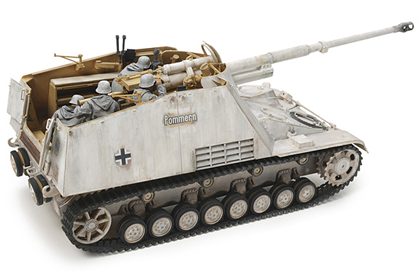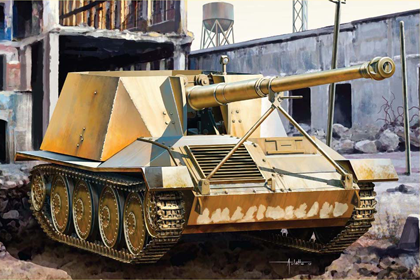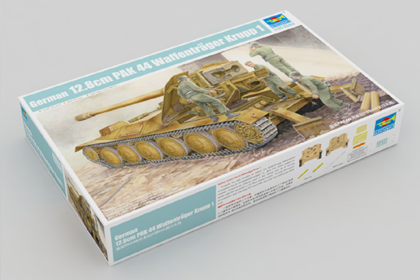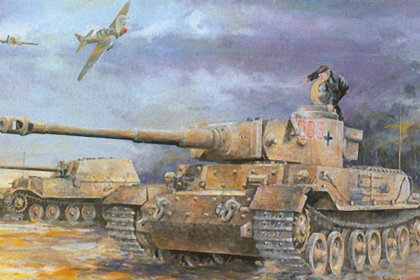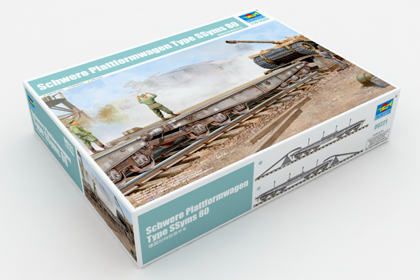This is the Dragon 6713 kit in 1/35 scale, of the ‘German s.IG.33 auf Fahrgestell Pz.Kpfw.III’.
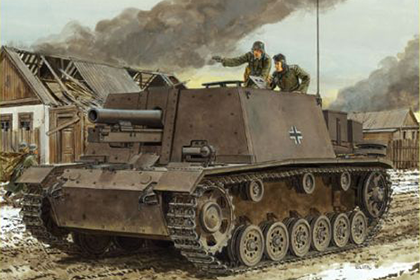
History
Five crewmen operated this self-propelled gun that was used exclusively on the Eastern Front. Half fought in the bloody Battle of Stalingrad from October 1942 onwards, where their heavy guns could effectively demolish buildings in the bitter urban combat.
The remaining vehicles didn’t reach Stalingrad because the German 6th Army was encircled by that time, so instead they deployed with the 23rd Panzer Division.
Manufacturer
Where I got it
- Stoppel Hobby (February 2015)

